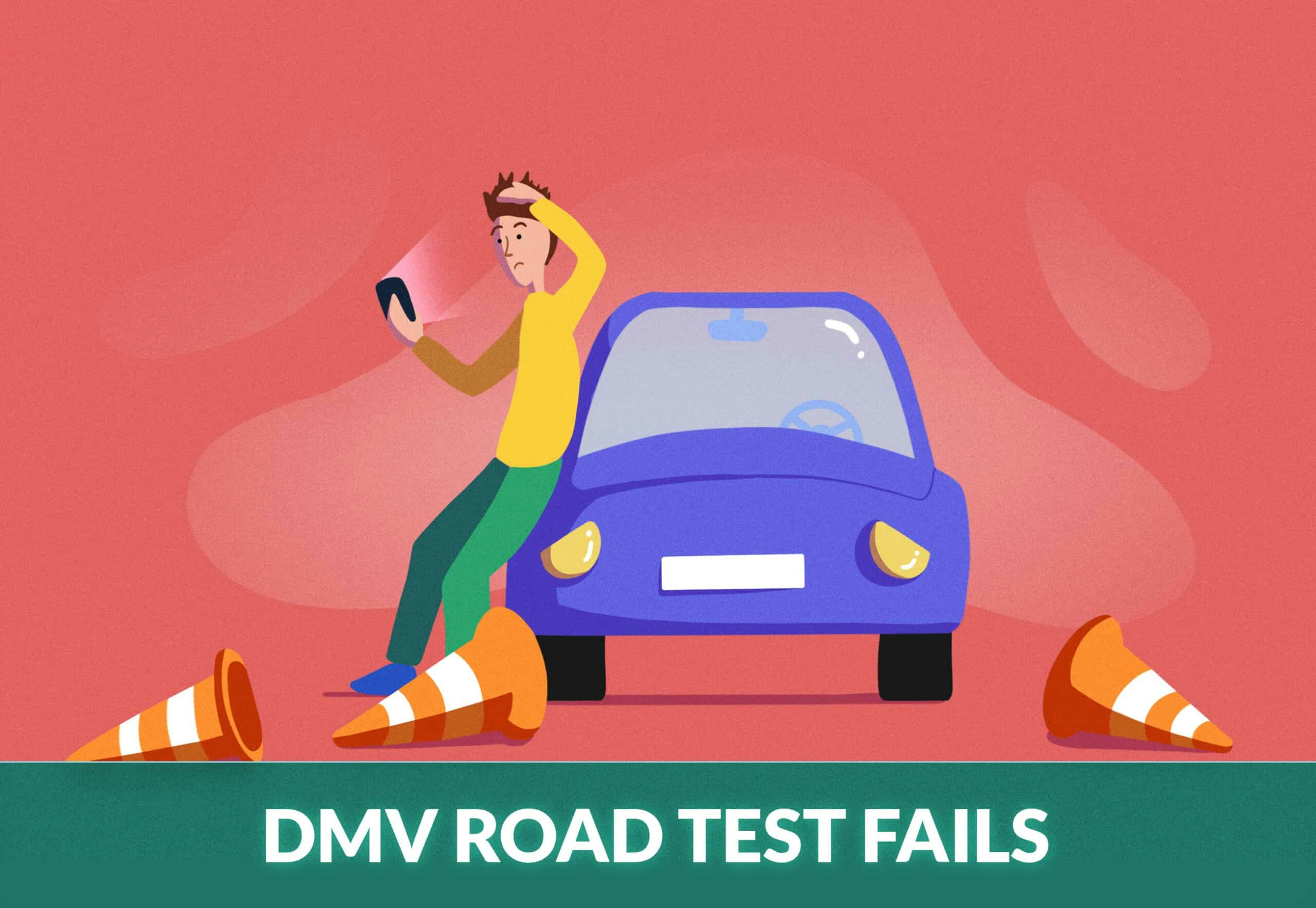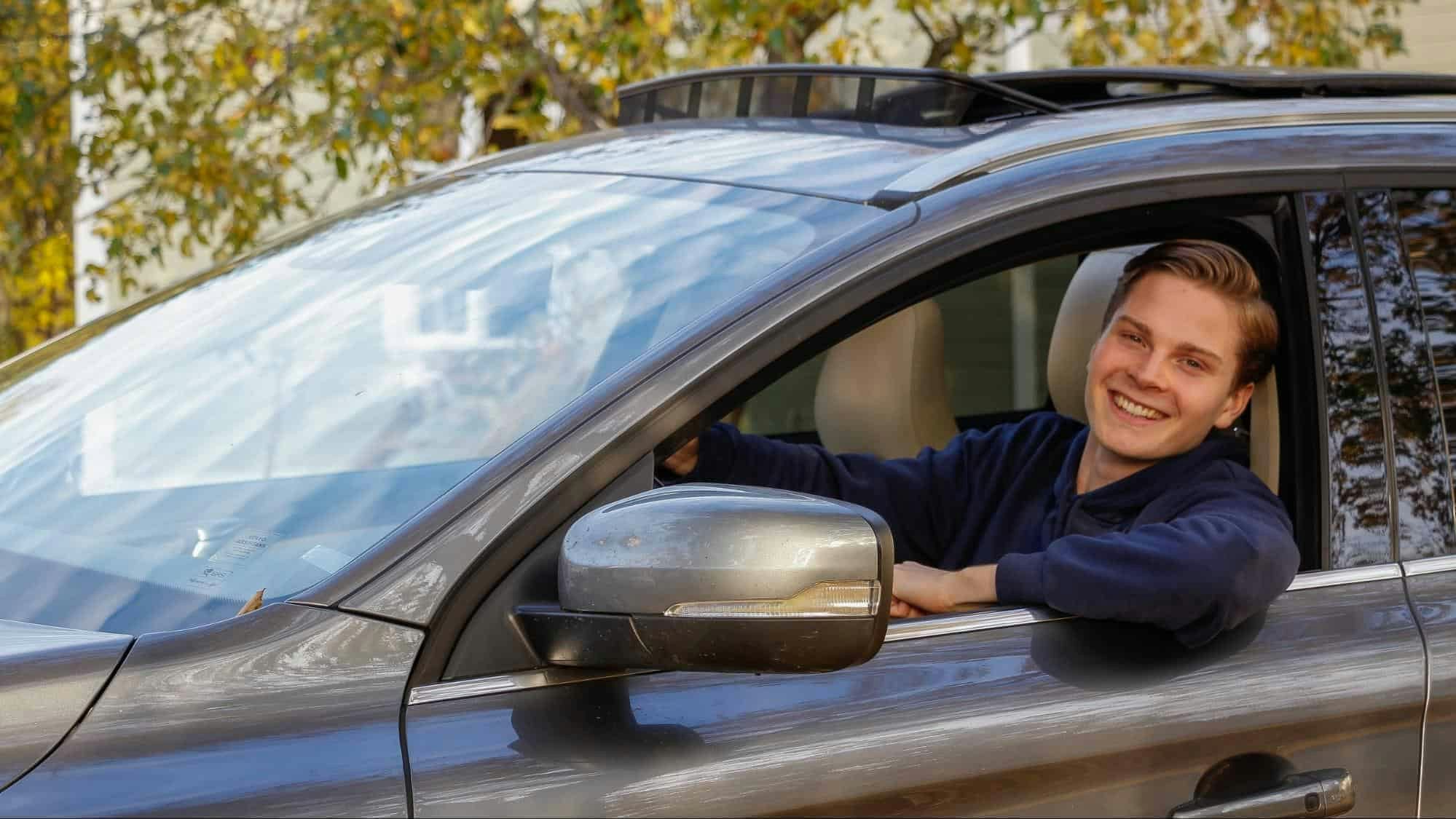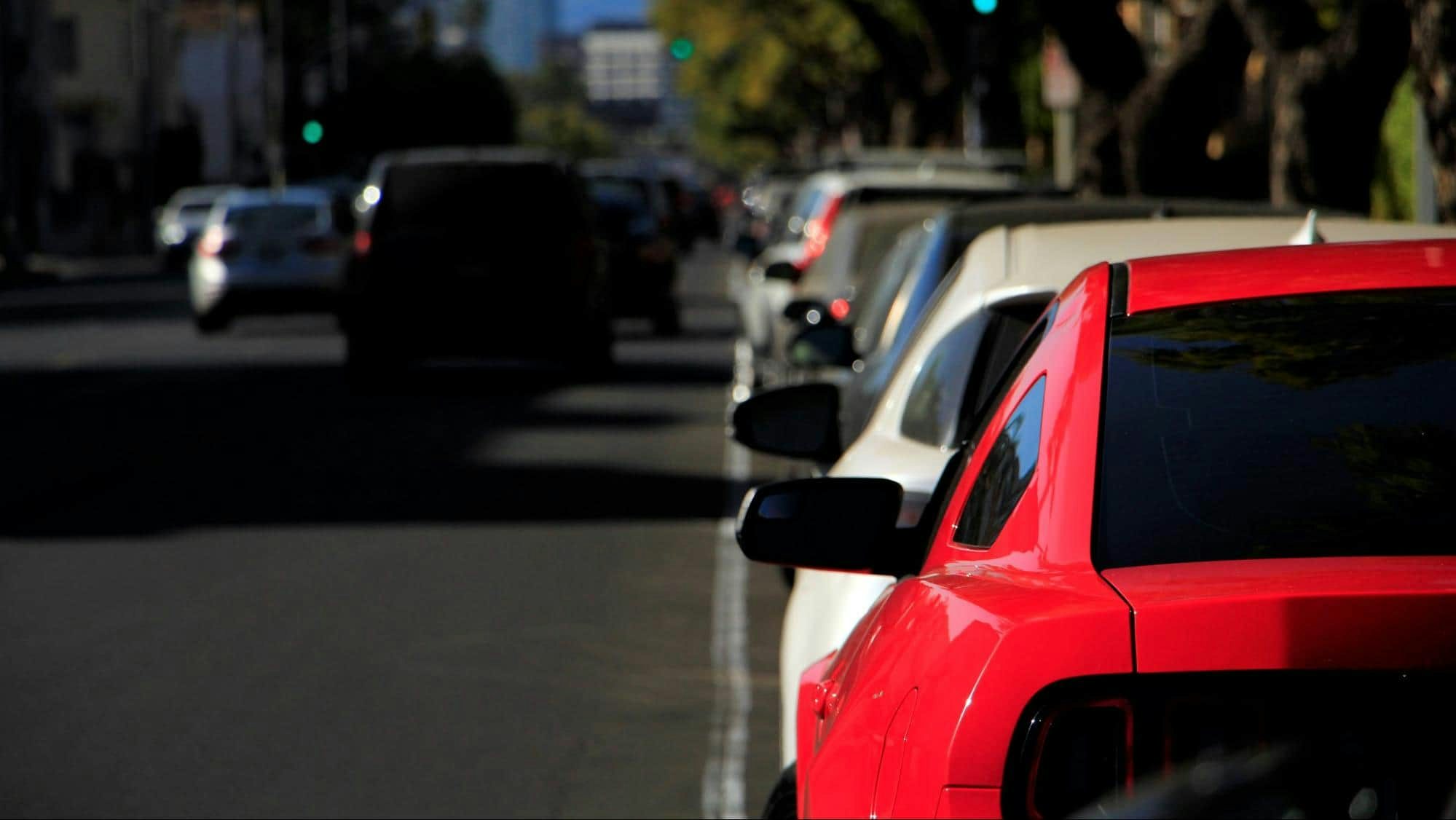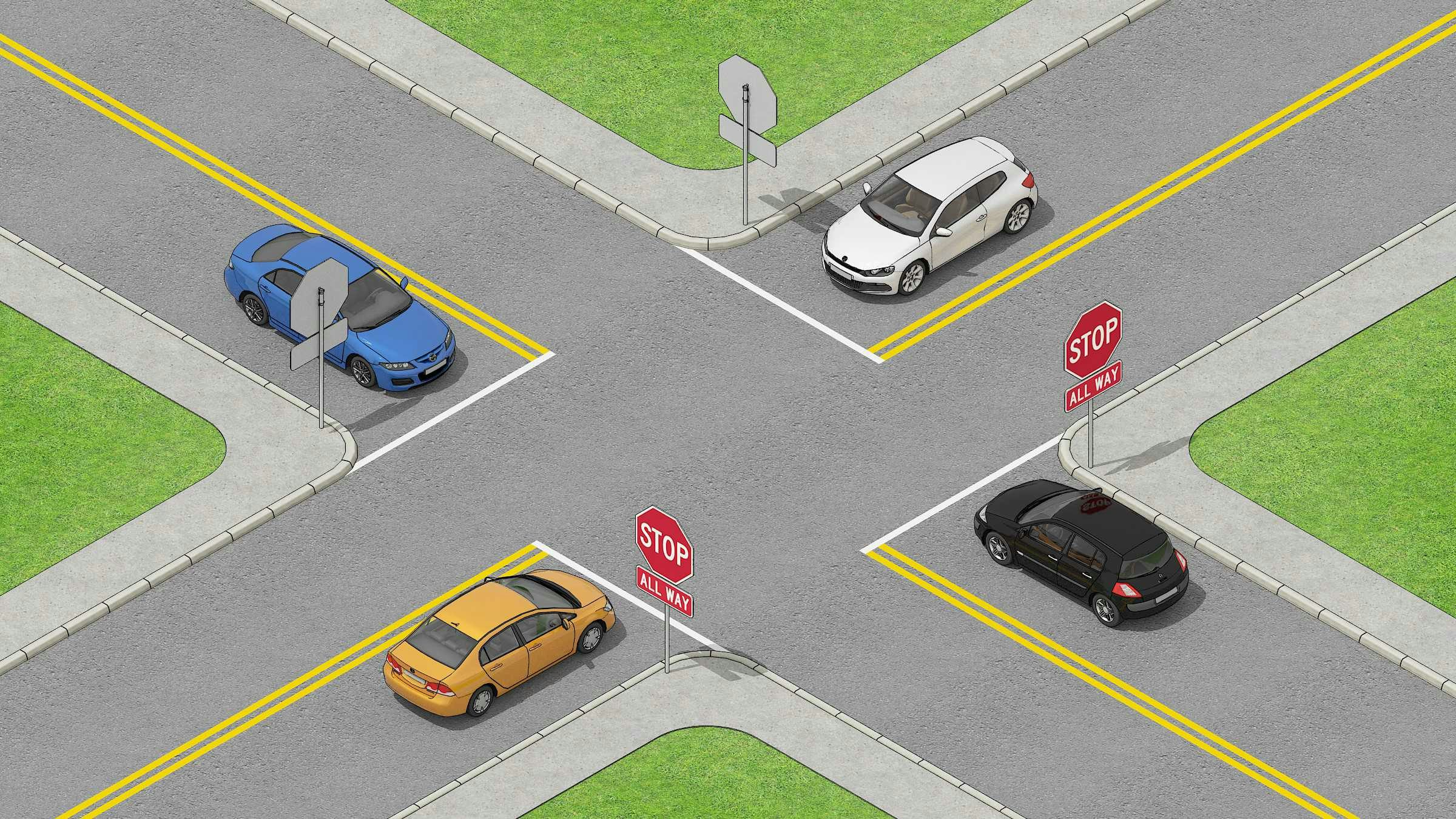
The 12 Most Common Driving Test Mistakes & Automatic Fails (And How to Avoid Making Them)
Each year, millions of Americans fail their driving test. Believe it or not, most fail their test for the same reasons. So, if you know what these common mistakes and are (some of which result in an automatic fail), you can prevent making those same mistakes on the day of your test.
Today, you will learn the top reasons why student drivers fail their road test, and what you can do to breeze through your exam.
If you prefer video, check out our thorough explainer video with driving instructor Jacqueline – what not to do on the road test:
1. Failing to Fasten Seatbelt
You should always fasten your seatbelt after entering a motor vehicle, whether you are the driver or passenger. However, many students forget to do so on the day of their driving test. This could be attributed to a variety of factors – fear, anxiety, and nervousness, just to name a few. Despite being such a simple task, fastening your seatbelt is by far the most fundamental practice of motor vehicle operation. Failing to do so before putting the car in motion will result in an automatic fail on your road test.
Solution: If you find yourself forgetting to buckle up when you get behind the wheel, you’re not out of luck when it comes to breaking this habit. Simply make a conscious effort to fasten your seatbelt immediately upon entering any vehicle for any reason. Whether driving or sitting along for the ride, performing this action every time you get in a car will become an afterthought eventually. At the time of your driving test, you will have no issues remembering to buckle your seatbelt before taking off.

2. Incomplete Stops
Failure to make complete stops at stop signs is another automatic fail on the driving test. Making a rolling stop at a stop sign is illegal in all states and carries a fine of $75 to $500 or more, depending on local law.
Solution: Practice driving through neighborhoods and coming to a fully complete stop at each and every stop sign. Your vehicle should cease motion completely before you continue. Don’t be afraid to hold your foot on the brake for a few moments to ensure you have come to a complete stop – it’s much better to be safe than sorry!

3. Driving Too Quickly
Driving too fast unnecessarily is another mistake students fall victim to. Due to the dangers involved with operating vehicles at high speeds, driving over the speed limit will result in an immediate fail on most states’ driving tests. Many student drivers don’t speed out of recklessness, but rather due to anxiety or nervousness.
Solution: In general, you want to stay at or below the posted speed limit. You will find these signs placed before and after every intersection on service roads, and after every 1-5 miles on the freeway. To ease any fears you may have during the examination, be sure to take a quick test drive before you head to the DMV. You’ll be much more relaxed with some drive time under your belt, more attentive to road signs, and much less likely to speed due to anxiety.

4. Applying Excessive Brake Pressure
Bringing your vehicle to a stop is a fundamental you cannot avoid on the road test. While it is simply done by the stamp of the foot, there is a proper and improper way to brake. Improper braking is harsh, rough, and can lead to an automatic failure of your driving test.
Solution: Brake pressure should be applied gently and consistently at first. As you reach your destination, gradually increase your braking pressure based on the distance left to travel. You can practice this along with other fundamentals while city driving or you can simply practice braking in a large, empty parking lot to avoid traffic.
Keep this in mind when approaching intersections or other places where you’re most likely required to stop.
5. Driving Slowly
Driving too slowly is a mistake people often make in an effort to avoid driving too quickly. However, slow driving is just as, if not more, dangerous than driving at high speeds. This is because lagging drivers can greatly disrupt the normal flow of traffic. A slow motorist combined with a few inattentive drivers on a freeway can spell disaster for all parties involved.
Solution: If you’re making the mistake of driving too slowly, it is important to remember to take notice of speed limits on roadways in your area. While these signs tell you the maximum speed your vehicle should reach, it is generally good practice to stay within 10-15mph below that limit, and no more than 5mph above.
6. Improper Parallel Parking
Parallel parking is a difficult skill to master. Many drivers with decades of experience would rather take several extra minutes searching for a non-parallel spot than have to commit to a parallel parking space. In several states such as Texas, student drivers cannot receive their license to operate a motor vehicle without the successful completion of a parallel park.
Solution: Because of the headache that is parallel parking, hundreds of videos, and guides on the subject exist. Browse Google for the style of teaching that works best for you and be sure to practice this method every day. The explanation may seem easy online, but it won’t be as simple when actually trying to park. Repetition is key here – try parallel parking in a variety of different situations to perfect your maneuvering.
We have a step-by-step parallel parking guide that can help you out.

7. Improper Lane Change
In addition to the physical act of changing lanes, there are several points to remember when doing so. Your examiner will mark you down several points for failing to properly and safely switch from one lane to another.
Solution: When changing lanes, always remember to first survey your surroundings. Check your rearview, then side view mirror, and finally blind spot before completing a lane change. Failing to do either of these will result in a failing mark on the ‘lane change’ portion of the drivers’ test. Additionally, students must signal at least 5 seconds before beginning to change lanes.
8. Car Failure
The testing vehicle you choose must abide by legal guidelines for road use, such as working brake lights, functioning windshield, and working headlights. Your local DMV will disallow you from taking the exam if your car has expired registration or is not up to date on inspections or emissions checks.
Solution: Do a full self-inspection of your vehicle at least 3 days prior to your scheduled test appointment. Check your mirrors, brake lights, and headlights to ensure they are all in working order. Also, make sure your registration and insurance documents are up to date. Any condition that affects the legal operation of your vehicle will deem you ineligible to take the driving test until those matters are addressed.
9. Lack of Vehicle Control
Failing to control your vehicle will definitely lead to a few lost points. In more serious examples, the examiner will intervene, resulting in an automatic failure on your driving test. Cases of understeering or oversteering are common ways to lose control of your vehicle.
Solution: Try keeping your hands positioned at 10 and 2, or 9 and 3 on the steering wheel at all times, as recommended by the National Highway Transportation Safety Association. This way, you’ll be in full control of your vehicle as you steer, turn, and avoid any obstacles that may be on the road.
10. Following too Closely
As a general rule of thumb, you should keep about a three-second following distance between your vehicle and the one ahead of you. This will ensure you have ample time to make emergency maneuvers, if necessary. You are sure to miss points if you keep an unsafe distance from other vehicles.
Solution: Practice keeping your distance from other vehicles when following and braking. The anxiety that may come with taking a driving exam can cause students to commit mistakes out of nervousness. The more preparation you have behind the wheel, the less likely you are to make these errors.
11. Not Checking Mirrors
Your test administrator will keep a keen eye on your usage of interior and exterior mirrors. To avoid missing points, you will want to check your right side, rearview, and left side mirror about every 5-10 seconds. Not only is it important for passing the road exam, checking mirrors consistently keeps you informed of your driving environment at all times.
Solution: Exaggerate your mirror checks. Points will be deducted from your exam if your instructor can’t determine if you checked your mirrors, even if you actually did. Additionally, don’t forget to check your blind spot when changing lanes.
12. Confusion at Four-Way Stops
When coming to a four-way stop with other vehicles, you are expected to know exactly what to do. Prolonged stops at a four-way stop sign may indicate to a test administrator that this is not the case. It is also a safety hazard, as your inaction will also confuse other drivers.
Solution: Four-way stop rules are simple. Whoever arrives at the stop first has the first right of way. From there, the second and third arriving drivers are free to go one after another. If all drivers come to a stop at about the same time, the vehicle on the right side is given priority.

That’s It!
Are you preparing for your driving test and want to know exactly what examiners look for and how to pass? Our behind-the-wheel online course is tailored to help you acquire the essential skills to pass your test with confidence. Featuring professional online driving lessons, we focus on key areas that examiners assess. Our course includes insider tips from professional driving instructors on what examiners are looking for and how to avoid common mistakes. Try Zutobi today and experience the difference.

Avoid beginner mistakes with expert advice
Build road test confidence and reduce anxiety
Make at-home lessons a success with our parent guide
Recommended articles
Ace your DMV test, guaranteed
Want to Be the Top School in Your Area?
- Simple & automated admin
- More time for teaching
- #1 learning materials for students


